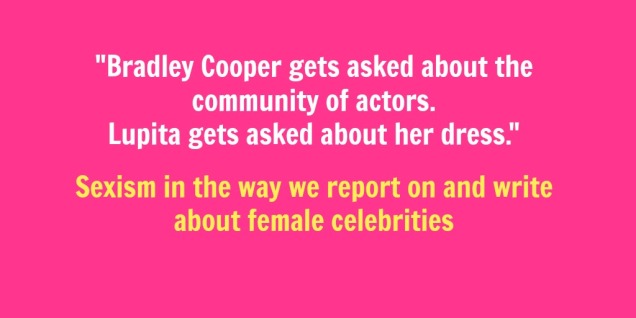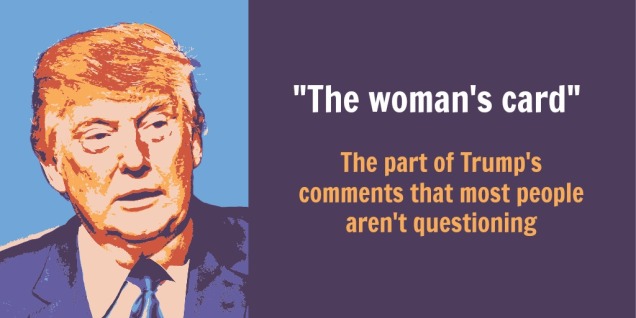Last year, actress Jennifer Lawrence made headlines when she wrote an essay about the gender gap in salaries for male versus female actors. Lawrence pointed out that even in this day and age, male actors earn more than their female costars.
The fact that male actors make more money than female actors, on average, may not be surprising given that there’s a gender wage gap across occupational fields. As a result, it may not seem that unusual that female actors, as immortal as they may sometimes seem, face the same wage-gap challenge that women in other industries do.
What doesn’t get as much attention, however, is a subtler form of sexism that female actors face: the way we talk to them and about them. Ever watch a red-carpet event that precedes a major awards show like the Oscars or the Emmys? If you have, did you notice anything about the questions that female actors versus male actors got asked when they were interviewed? You may have noticed that women tend to get asked about their gowns or pregnancies whereas men are more likely to get asked about their acting roles or costars.
This discrepancy in how male and female actors are interviewed doesn’t just bother feminists; it’s touched a nerve with the celebrities themselves. At the 2015 Grammys, Nicole Kidman refused to answer Ryan Seacrest when he asked her which designer she was wearing. Even more boldly, at the 2014 SAG Awards, Cate Blanchett crouched down and called out a cameraman who did a full-body pan of her dress by asking “Do you do that to the guys?”.
Some members of the media have recognized the differences in how men and women are interviewed on the red carpet and have tried to take a different approach. One journalist started a campaign called #AskHerMore to encourage reporters to ask women about more than just the designer they’re wearing. More recently, Buzzfeed made headlines when they created a video in which they asked men at the BAFTA Awards the types of questions that women typically get asked (including asking a confused Eddie Redmayne to do a twirl).
Now, it may seem easy to blame the media for treating female actors in a sexist way, but in reality, us mortals aren’t any better. Earlier this year, Grammarly analyzed the way that actors are described in movie reviews and comments. One of the things they found was that although actors Charlotte Rampling and Sylvester Stallone are about the same age, people described Rampling as “aging” but Stallone as “iconic.” People were also more likely to focus on physical appearance when describing a female versus male actor.
Given the amount of money that A-list actors make, it may be hard to feel sympathetic toward female actors. In fact, some may even go as far as to say that female actors shouldn’t complain about how they’re treated because they’ve chosen a field that’s known for privileging beauty at the expense of valuing other qualities. However, let’s imagine the impact that female actors could have if we let them talk about the things that really matter to them at a time when millions of people around the world are listening. Some may still wish to talk about their gowns, and if they make that decision on their own, there’s nothing wrong with that. Other women, however, may choose to comment on a current event or champion a social cause, thereby inspiring and motivating other people to get involved in their communities. It may sound crazy to say that we could change the world by changing the way we talk to female actors, but maybe it’s not so crazy after all.
What are your thoughts on the way people report on and write about female celebrities? Let us know by leaving a note in our comments section below.
Need to make a good impression with your marketing content, funding proposal, or admissions essay? We can help. Get an instant quote here.
Inpression Editing | Online editing, copywriting, and coaching | www.inpression.io

